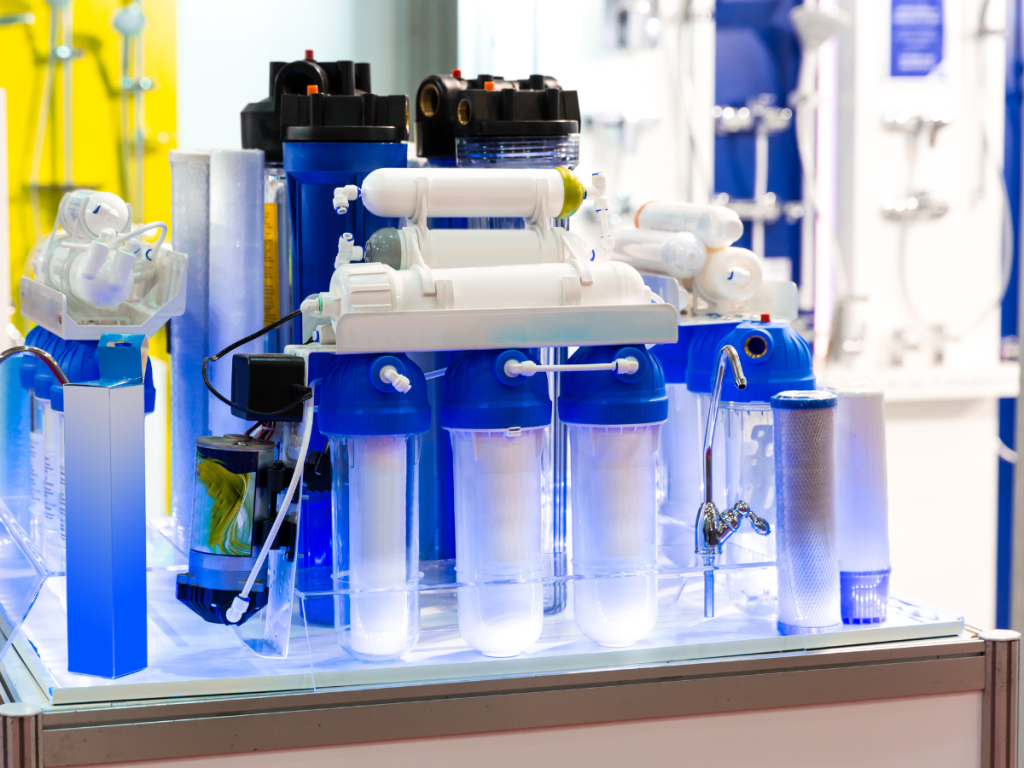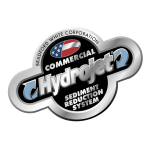Clean and safe drinking water is fundamental to a healthy lifestyle. Distillation and reverse osmosis (RO) are two effective approaches for purifying our drinking water supply, though their processes differ considerably. This blog post will explore the differences between them.
Methods: distillation vs. reverse osmosis
Each method carries a unique approach, but they share the same goal: delivering clean, safe water. Let’s go over the details of these two methods.
Distillation
Distillation is a proven purification method used for generations that’s still commonplace today. The process involves:
- Boiling: A heat source is used to bring the water to a boiling point.
- Catching steam: The boiling water produces steam, and this condensation is then captured.
- Condensing steam: The steam rises into the condenser, where it cools and turns back into liquid.
- Collection: The newly purified liquid is made to accumulate in a separate container.
This method effectively eliminates a diverse range of contaminants and bacteria, leaving you with pure water.
Reverse osmosis
Reverse osmosis is a more contemporary method of purification. It encompasses:
- Pressurizing: Water is pressurized in a tank.
- Forcing liquid through a membrane: Under pressure, the liquid is then forced through a semipermeable membrane.
- Filtering contaminants: The membrane filters out the contaminants, passing only clean water molecules.
- Collection: The pure water then becomes directly available from your home faucet.
This method is proficient at filtering both inorganic and organic contaminants.
Which method is better?
Before choosing between distillation and reverse osmosis as methods for purification, it’s essential to determine what types of contaminants need to be removed from the system in your house.
Distillation tends to work best at eliminating organic contaminants, while reverse osmosis excels at handling both types.
Plumb-Tech can assist in choosing the most appropriate water treatment method for you and your household.
Mineral content: distillation vs. reverse osmosis
Distillation and reverse osmosis both effectively remove impurities from water, but these purification methods also have significant impacts on mineral composition (i.e., levels of essential minerals like calcium, magnesium, and potassium).
Distillation
While incredibly efficient at removing contaminants, the distillation process also removes natural minerals present. As a result, mineral levels in distilled water are minimal.
This lack of minerals has generated much discussion in health circles, as calcium, magnesium, and potassium play vital roles in our bodily processes—for instance, calcium helps promote bone health, magnesium aids nerve function, and potassium contributes significantly to the well-being of one’s heart.
Reverse osmosis
Reverse osmosis also leads to a significant reduction in mineral content. Calcium, magnesium, and potassium are largely stripped during the RO process.
However, some RO systems now come with a remineralization stage, which adds beneficial minerals back into the water post-purification.
Taste and odor: distillation vs. reverse osmosis
Both distillation and reverse osmosis affect the taste and odor of water in their own unique ways.
Distillation
Distilled water is typically tasteless and odorless, as the distillation process strips the water of minerals, which naturally contribute to its flavor. Some people favor this neutral taste, while others find it lacking. Distillation removes volatile compounds as well as any potential odors to ensure water is as pure as it gets.
Reverse osmosis
Like distillation, reverse osmosis significantly reduces mineral content, which also affects its taste. However, the taste of RO water differs slightly depending on the quality of the source water and the effectiveness of pre-filters to remove chlorine.
Some describe it as ‘flat’ or ‘clean.’ The absence of odor is also a common characteristic unless the source water contains certain contaminants that the RO system fails to completely eliminate.
Preferences can determine the better choice
Several factors can influence the taste preference between distilled and reverse osmosis water. These include the individual’s sensitivity to taste, the mineral content of their diet, and prior exposure to different types of water.
For example, someone with a diet rich in minerals might not mind the lack of taste in distilled or RO water. On the other hand, someone used to drinking mineral water might find the alternative tastes flat. While distilled and reverse osmosis water is virtually tasteless and odorless, personal taste preferences and dietary habits can affect which type one prefers.
Pros and cons of distillation and reverse osmosis
Distillation and reverse osmosis are both efficient methods of purification, each offering distinct advantages and drawbacks that must be considered carefully before selecting one or the other.
We’ll discuss these factors regarding cost, energy consumption, environmental impact, and potential human health benefits or concerns.
The pros of distillation
- High purity: Distillation effectively removes a wide range of contaminants.
- Low maintenance: Once set, distillers typically require little maintenance.
The cons of distillation
- High energy consumption: Distillation requires a considerable amount of energy for boiling, posing potential environmental concerns and elevating utility costs.
- Slow process: The process of distillation can be slow; thus, it may not be the best choice for large families or offices.
- Removal of beneficial minerals: Distillation processes strip vital minerals, which are vital components for good health.
The pros of reverse osmosis
- Excellent purity: Reverse osmosis excels at removing both organic and inorganic contaminants.
- Integrated systems available: Many modern RO systems come with integrated pre and post-filters and a tank, making them a comprehensive purification solution.
The cons of reverse osmosis
- Somewhat high energy consumption: While not as energy-intensive as distillation, RO still requires a significant amount of energy to pressurize water.
- Wastewater production: RO systems produce a considerable amount of wastewater, posing environmental concerns.
- Removal of beneficial minerals: Similar to distillation, RO also removes beneficial minerals (although some systems now come with a remineralization stage).
Interested in a new water purification system? Ask the pros at Plumb-Tech!
In terms of water purification, both distillation and reverse osmosis emerge as powerful contenders, each with their unique strengths and limitations. Whether it’s the high purity of distilled water you seek or the comprehensive filtering solution offered by reverse osmosis systems, your choice ultimately hinges on your specific circumstances, needs, and values.
If you’re interested in having a purification system installed, contact Plumb-Tech now! Our experts are the best in the industry, equipped with the right tools and problem solving abilities to guide you every step of the way.
We can help with all plumbing-related issues, whether it’s water purification or scale buildup in your system.





